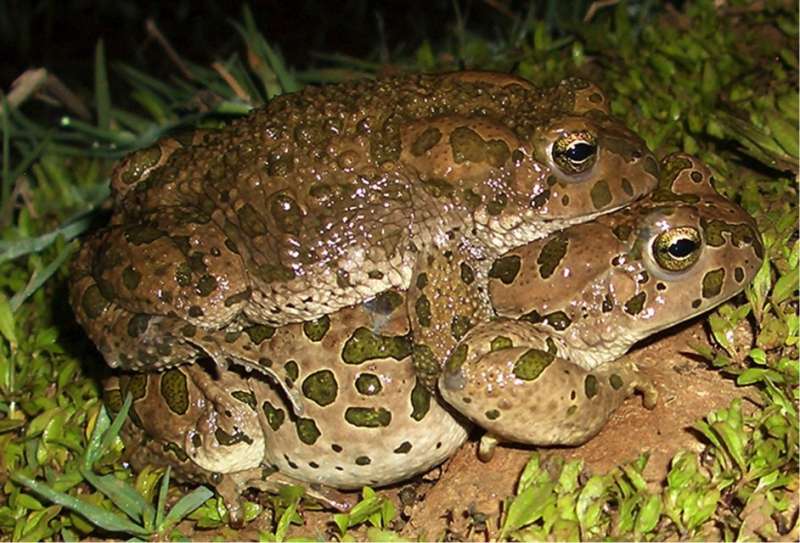Green toads with multiple genomes have ancestors that are only distantly related

Diploid vertebrates have two sets of chromosomes, one from each parent. In contrast, polyploidy, meaning to possess three or more sets of chromosomes, is very rare in animals. To find out how new vertebrate species have evolved, and, more generally, how the current biodiversity emerged, evolutionary biologists are studying green toads (Bufo viridis), an excellent model system for studying evolutionary processes, because they can be diploid or polyploid.
Dr. Matthias Stoeck from the Leibniz-Institute of Freshwater Ecology and Inland Fisheries (IGB) and researchers from the University of Lausanne (Switzerland) and the Helmholtz-Centre for Environmental Research (UFZ) have just published an extensive phylogenetic tree for the Eurasian green toads. This phylogenetic tree shows that polyploid species are hybrids and only descend from parental species with a very high degree of genetic divergence.
Most polyploid fish, amphibians and reptiles are hybrids and contain the genetic material of two genetically separate parental forms: All chromosomes of the parental forms are retained, and species with more than two chromosome sets evolve. In this way, new hybrid species can emerge within few generations, revealing characteristics and traits not expressed in either parent line (transgressive traits). Consequently, polyploid hybrid speciation differs significantly from classic forms of speciation (including allopatric), which takes place over very long periods and, in most cases, due to spatial separation of populations. Both forms of speciation occur in green toads. Lineages of European diploid green toad species meet in several Eurasian regions after varying periods of time and mate—however, without creating polyploid toads. In contrast, some only distantly related Asian green toads have produced species with three or four chromosome sets (tri- or tetraploidy).
The authors compared their findings about the evolution of Eurasian green toads to data published on polyploid fish, amphibians and reptiles. "Presumably, one precondition for the successful evolution of polyploid vertebrates is a great evolutionary divergence of the ancestors, i.e. a high degree of genetic distance," explained Dr. Matthias Stoeck, evolutionary biologist at IGB, summarizing the study's most important finding. Genetic examination revealed that only ancestors of polyploid green toads, which have diverged for about 6 million years, contributed to polyploid evolution. More closely related lineages have only formed hybrid toads with two chromosome sets (diploids).
More polyploidy since the Ice Age
In addition, the researchers detected that the polyploid toad species have mainly evolved since the beginning of the Ice Age (approximately two million years ago). They assume that the polyploids adapted to more extreme climatic conditions due to the new traits provided by the "additional" chromosome sets, enabling them to occupy new ecological niches that are unavailable to the parental species.
More information: Caroline Betto-Colliard et al, Profound genetic divergence and asymmetric parental genome contributions as hallmarks of hybrid speciation in polyploid toads, Proceedings of the Royal Society B: Biological Sciences (2018). DOI: 10.1098/rspb.2017.2667
Journal information: Proceedings of the Royal Society B
Provided by Forschungsverbund Berlin



















